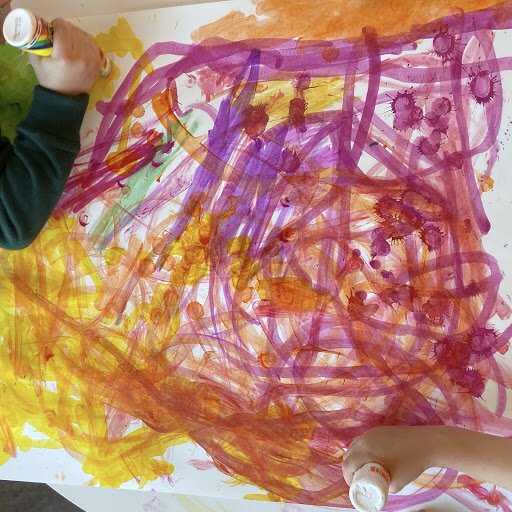The Crossover of Art Therapy and Art Education
Art Therapist or and Art Teacher?
Hi! I’m Krissy, MA, ATR-BC, LCAT… and I LOVE those letters after my name! It means I am an official Registered and Licensed Art Therapist. I received my undergraduate and graduate degree from Long Island University in Clinical Art Therapy and Counseling. One of the most common topics I have covered during my time in the field is explaining the difference between art therapy and art education. Throughout all of my internships, as well as frequently in everyday life, I have had to explain what art therapy is since it is such a small field. Now fast forward six years, which included getting my licensing hours, finding my therapeutic style, and working in the field in various settings in New York, and I have now found myself as an Art Therapist in a private school in Houston, Texas!
WHAT DOES ART THERAPY IN SCHOOLS LOOK LIKE?
I create a therapeutic curriculum for all art classes while also seeing referred students individually for short-term therapy. In art class, I encourage the process of art as opposed to the product. While we do learn different art techniques and skills, I am creating an environment that allows students to explore themselves through art materials. Each class has a different directive, aka art project, that is designed for a specific goal. Goals can vary from self-exploration, tactile tolerance, fine/gross motor skills, social-emotional regulation, etc. The list goes on! We build self-esteem and understand group dynamics. We learn social skills that will help us thrive. Building a therapeutic art curriculum allows me to meet the students where they are and adjust my curriculum to meet their needs.
Short-term art therapy may have similar goals, but the students are referred to me by teachers, parents, or from conferences. Students are referred to art therapy because they need extra support with social-emotional goals, peer conflicts, low self-esteem, struggles at home, parents’ divorce, or more physical fine/motor goals. Art therapy is an effective and beneficial form of therapy for various goals. Short-term art therapy meets for 8–12 weeks. Each client will get an individualized treatment plan and be pulled from class for a 30-minute session. No need to worry about fitting art therapy into your after-school schedule because I am right on campus and we schedule it around academic class times too.
BENEFITS OF ART THERAPY IN SCHOOLS
One of the perks of being both an art educator and an art therapist is that I get to see and process with my students both as individual clients and also in a classroom setting. I utilize the therapeutic relationship in both settings and it allows me to understand more of the group and social dynamic that typically would be harder to observe as an outside clinician. This also allows me to provide accurate and more effective strategies for in-the-moment intervention. These students get to know me and we build a connection with the art in a non-judgmental and safe environment. When they are referred to me, we have a jump start on building a therapeutic alliance. Being closely connected to therapists in school creates an opportunity for increased awareness, decreased stigma against getting “help,” and allows for the most effective opportunities at early intervention.
Team Early Intervention
I have fallen in love with art therapy in schools, and I think memories of my schooling would have been improved if we had Creative Arts Therapists as an outlet for guidance. Why wait to build coping skills and strategies? Why suffer through uncomfortable social situations? Let our kids learn to connect with themselves, their peers, and our entire community through art!
If you are interested in art therapy for you or someone you may know, reach out!
Contact us here!

